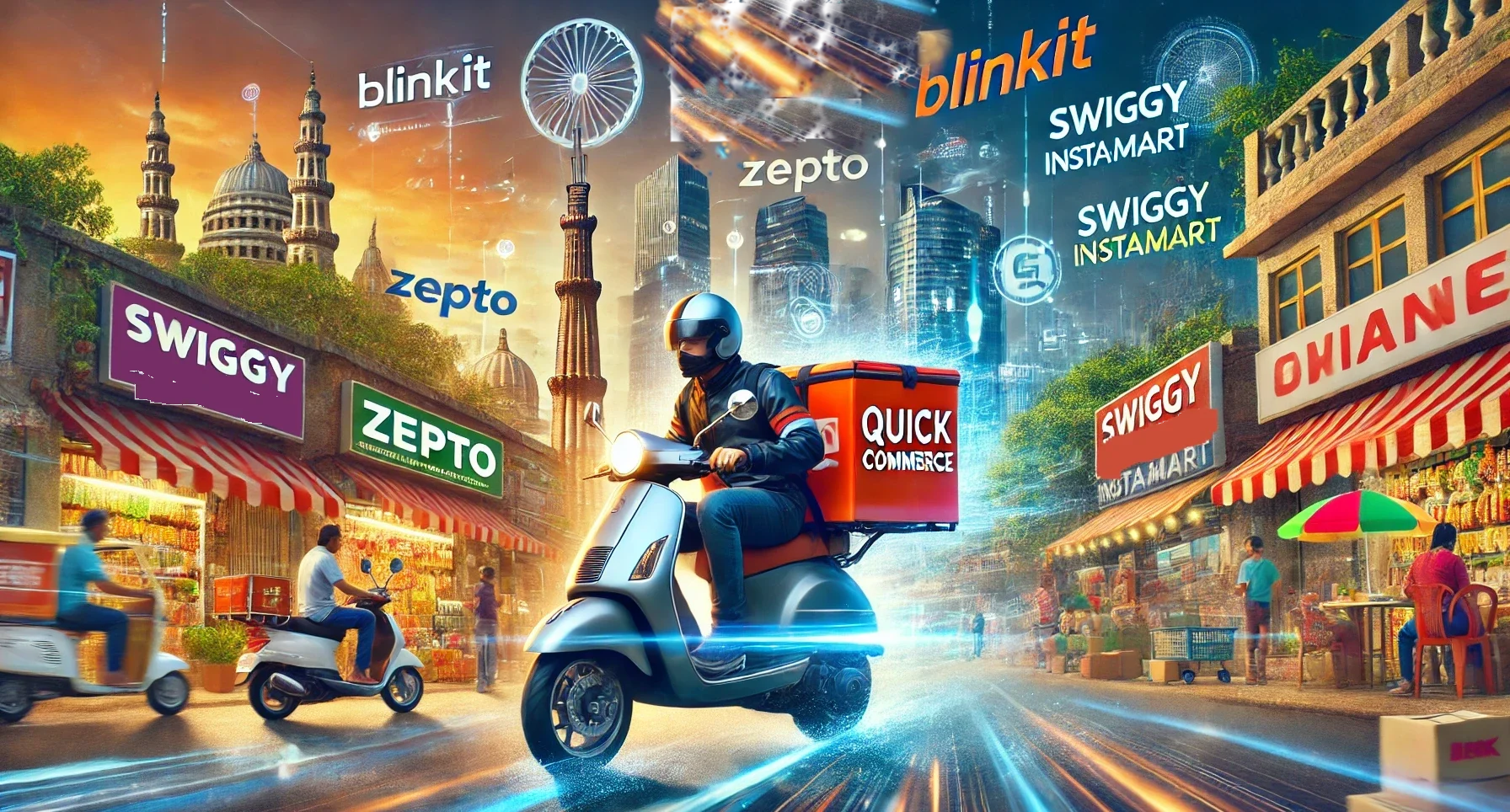Quick commerce, often referred to as Q-commerce, is continuously changing India’s digital retail landscape. According to Statista analysis, this industry is clearly growing quickly and is projected to bring in over 28,105 crores rupees in revenue in 2024 by offering quick and easy delivery of groceries and other necessities.
Key Players
Leading quick commerce platforms like Zomato’s BlinkIt, Zepto, and Swiggy’s Instamart are delivering goods within 10 to 20 minutes in major Indian cities. The secret behind these blazing-fast deliveries is their reliance on dark stores—localized fulfillment centers that are not open to the public but stocked to ensure rapid delivery times. These stores allow platforms to meet a wide range of consumer needs, offering everything from daily groceries to electronics, stationery, beauty products, and even festival-related items.
Flipkart has also made its entry into the quick commerce market with the launch of Flipkart Minutes. Started in Bengaluru, Flipkart Minutes promises deliveries within 8 to 16 minutes. Now, it has also expanded to some areas in Gurugram and NCR. BBNow, BigBasket’s quick commerce service that started in April 2022, is also expanding it’s operations.
While Amazon is currently focusing on traditional e-commerce, reports suggest that the company plans to enter the quick commerce sector by Q1 2025, a move that could further shake up the industry.

The Role of UPI in the Growth of Quick Commerce
A major factor behind the rapid rise of quick commerce is the widespread adoption of digital payment methods, especially the Unified Payments Interface (UPI). UPI has revolutionized the way Indians make transactions, providing a seamless and secure method for making payments. Its integration with quick commerce platforms ensures that customers can complete purchases in just a few taps, further driving the growth of the industry.
Related: UPI in 2024: Key Advantages and Concerns You Need to Know
Challenges: Profitability and Expansion
Despite its soaring popularity, the quick commerce industry faces significant challenges when it comes to profitability. Platforms like BlinkIt and Zepto are currently operating at heavy losses, as the cost of maintaining dark stores and ensuring rapid deliveries eats into their profit margins. Additionally, while the convenience of quick commerce is undeniable, it is still limited to select areas in major cities. Expansion into smaller towns and rural areas will be key to long-term growth, but this comes with logistical hurdles.
Quick commerce in India is expected to be profitable in a few years, considering the huge growth of this industry with losses coming down each year. As platforms like BlinkIt, Zepto, and Swiggy Instamart scale up, they are seeing a reduction in per-order costs, thanks to increased order volumes and more efficient delivery networks. The integration of technology such as AI, route optimization, and inventory management is also helping to lower operational expenses, making the business model more sustainable
What Sets Quick Commerce Apart from Traditional E-commerce?
Traditional e-commerce platforms, such as Amazon and Flipkart, have historically offered deliveries within 2-5 days, with premium options like next-day or same-day delivery available for an additional fee. In contrast, quick commerce platforms deliver items within minutes. This service model has gained traction among consumers who value speed and the ability to receive essential medicines, fruits, vegetables, stationery items, electronics, beauty products, toys, etc. within minutes.
Looking ahead, the quick commerce industry is expected to expand its product offerings, potentially delivering larger items such as mobile phones, refrigerators, and washing machines in as little as 10-15 minutes. This shift would not only transform consumer expectations but also challenge traditional e-commerce players to adapt to faster delivery models.
The Future of Quick Commerce in India: A Game Changer
The quick commerce industry has experienced accelerated growth since the Covid-19 lockdowns. Its impact on the future of retail is undeniable. Quick commerce is set to become a major player, especially as platforms continue to expand their product ranges and optimize delivery times.
Moreover, the rise of quick commerce is having a significant impact on traditional retail stores and kirana shops. With deliveries happening in as little as 10-20 minutes, many customers are choosing quick commerce platforms over visiting their neighborhood kiranas for essentials.
As consumer behavior shifts towards instant gratification, the quick commerce industry could eventually replace traditional e-commerce in certain segments. Imagine ordering a smartphone or home appliance and having it delivered within 10 minutes. This is the future of retail in India, and it’s closer than we think.

1 thought on “Quick Commerce: The Future of India’s Digital Marketplace”